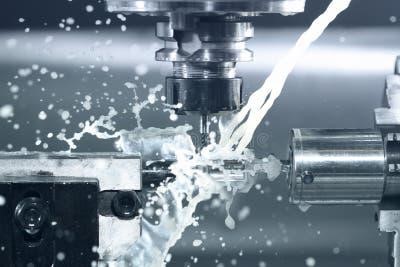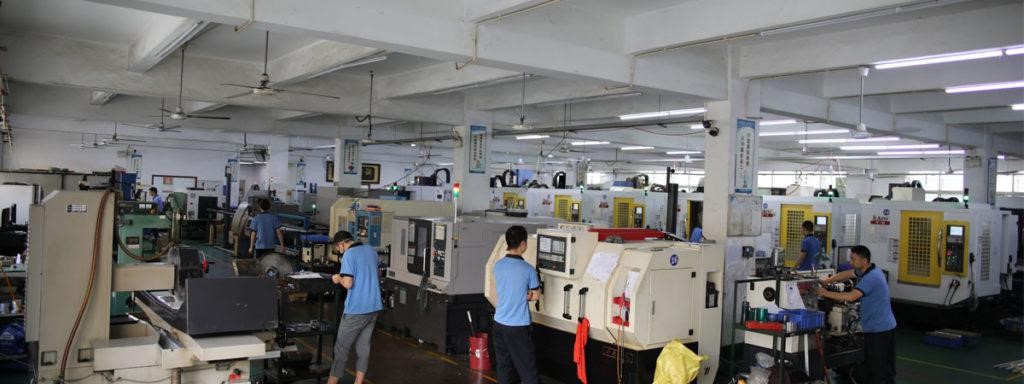Cost-Effective Solutions in CNC Machining Shops: Balancing Quality and Budget
One kind of production known as CNC machining makes use of software that has already been pre-programmed to operate various equipment and gear. Using this technique, basic materials such as metal, plastic, or wood may be precisely transformed into components that meet exacting standards. The unparalleled precision, consistency, and effectiveness of this process make it indispensable in production. CNC machining improves product quality and consistency by allowing the fabrication of complex parts with tight tolerances. Its automation makes complicated ideas that would be difficult or impossible to accomplish manually a reality while also decreasing the likelihood of human mistake and increasing manufacturing speed.
In CNC machine shops, striking a balance between budget and quality is a huge issue. Costs might rise due to the need for sophisticated machinery, trained personnel, and high-quality materials to maintain quality. Using less expensive materials or cutting down on machining time could save money, but it could come at the expense of the product’s accuracy and longevity. In order to be competitive and provide clients with reliable, high-quality components, machining shops must find the sweet spot between attaining exceptional quality and minimizing expenses.
Factors Affecting Cost in CNC Machining
The cost dynamics in CNC machining are influenced by several key factors:
- Material Selection:
Both the price and the quality of CNC machining are greatly affected by the material choice. The cost and machinability of various materials are not constant. The total cost of the project might be affected by the increased expenditure of using high-grade metals or specific alloys, notwithstanding their potential improved quality. Though they may save money in the short term, using less expensive materials could lower the quality or precision of the end result. When choosing materials, it is important to strike a balance between cost-effectiveness and the finished product’s desirable attributes to achieve optimal quality without going over budget.
- Machine Setup and Programming:
To save time and money in CNC machining, it is crucial to set up and configure the machine efficiently. Process optimization through careful planning and programming reduces downtime and makes the most of available machinery. Reduced manufacturing costs and increased overall efficiency are the results of shorter cycle times brought about by well-optimized programs. In addition, by utilizing cutting-edge software for toolpath optimization and simulation, processes may be even more streamlined, resulting in cost reductions without sacrificing quality.
- Tooling Considerations:
Improving CNC machining efficiency is as simple as using the correct tools. Improved surface finishes, less machining time, and less tool wear are all benefits of using high-quality cutting tools that are designed for certain materials and applications. In the end, better quality and decreased machining expenditures are the results of investing in premium tools, which may have a greater initial cost but often save money in the long term owing to their superior performance and longer lifespan.
- Labor Costs:
Managing labor costs while preserving quality is of the utmost importance in CNC machining, which relies heavily on skilled labor. To counterbalance labor costs, improve productivity by investing in operators with the right training to optimize machining operations and solve problems quickly. Machining shops still have a long way to go before they can compete on price without sacrificing quality, especially when it comes to skilled labor.
- Maintenance and Overhead:
Overall price in machining facilities is heavily affected by other expenditures such as equipment maintenance, utilities, rent, and administrative fees. By keeping up with routine maintenance, you may avoid costly downtime caused by unexpected equipment malfunctions. Sustaining profitability without sacrificing the quality of manufactured components requires controlling overhead expenditures via effective resource management and strategic planning.
The key to success and competitiveness for machining shops in CNC machining is mastering these aspects while maintaining a precise balance between cost and quality.
Strategies for Cost Reduction
Cost reduction strategies in CNC machining involve optimizing design, materials, processes, automation, and supplier relationships to enhance efficiency and lower expenses.
Design for Manufacturability (DFM):
Simplicity of shape, reduction of component count, and avoidance of complicated features are all aspects of part design that contribute to manufacturability. Making things easier for the production team means fewer machining operations, which means less time and money spent on manufacturing. Cutting costs on specialized or bespoke parts is possible with an emphasis on design uniformity, which enables the use of generally accessible materials and components.
Material Optimization:
A key component of cost reduction is efficient material consumption. In order to optimize the yield from raw materials and decrease scrap, it is recommended to employ tactics such as nesting pieces or using software for material layout optimization. To further help in cost reduction, materials that provide the necessary qualities at a lesser cost without sacrificing quality should be used..
Process Optimization:
If you want to increase production while decreasing expenses, you must streamline your processes. You may decrease idle time, shorten production cycles, and reduce energy usage by optimizing toolpaths, rewriting manufacturing sequences, and re-evaluating processes. Lean and Six Sigma are two examples of continuous process improvement approaches that may find inefficiencies and, by reducing waste and increasing efficiency, save a lot of money.
Automation and Technology Integration:
Cutting expenses in CNC machining operations is made possible by automating certain procedures. Reduced labor costs and greater throughput are the results of replacing human workers with automated material handling systems, CNC machining cells, or robotics. Machine uptime and maintenance expenses are both improved by using cutting-edge technology like AI-driven predictive maintenance, which adds to the total cost-effectiveness.
Supplier Partnerships:
The key to successful and cost-effective buying is building solid connections with suppliers. Save money, get more bang for your buck, and simplify your procurement procedures by working directly with your suppliers. Furthermore, trust is built via long-term collaborations, which opens the door to more price flexibility and improved access to cost-effective components or raw materials.
When these tactics are used effectively, they may significantly lower CNC machining costs. Machining shops may accomplish cost-effective operations without sacrificing quality by combining improvements in design, materials, and processes with technology breakthroughs and smart supplier collaborations. Not only do these methods save costs, but they also boost market competitiveness by providing high-quality components at affordable rates.
Balancing Quality and Cost:

When doing CNC machining, it is essential to keep the cost and quality in a tight balance. It is critical to efficiently control budgets while aiming for good quality. Striking this balance requires utilizing tactics that are cost-effective without sacrificing the product’s purity, accuracy, or reliability. Finding this sweet spot guarantees that the manufactured parts are both affordable and up to par with industry requirements.
-
Quality Control Measures:
It is crucial to implement efficient quality control procedures. Strategic quality checks performed at key points in the manufacturing process can reduce material wastage and rework costs by preventing faults. To maintain excellent quality without breaking the bank, it is recommended to use statistical process control (SPC) or modern inspection technologies to detect and fix problems early on.
-
Continuous Improvement:
Maintaining excellent quality while keeping expenses in check requires fostering an improving mindset. Small improvements that add up to big savings can be achieved by pushing staff to find and fix inefficiencies, streamline procedures, and improve workflows. This culture may be nurtured with the use of tools like Kaizen, Six Sigma, or Lean techniques, which can drive continuous improvements without drastically increasing costs.
-
Customer Satisfaction:
It is critical to match quality with what customers anticipate. In order to avoid wasting money on features or procedures that aren’t essential, machining shops can better satisfy their customers’ demands when they have a good grasp of what those needs are. Meeting quality standards and minimizing costs by adapting services to their particular demands is made easier with regular contact and feedback loops with clients.
Machining shops may achieve cost-effectiveness without sacrificing product quality by combining these methods. This allows them to compete in a highly competitive market.
The combination of these methods allows machining companies to produce products that are both affordable and of the highest quality, allowing them to survive and even prosper in today’s cutthroat market.
Real-world instances of CNC machining shops implementing cost-effective solutions:
Here are some real world instances of CNC machining shops implementing cost effective solutions
- Process Automation: A computer numerical control (CNC) machine shop saved a ton of money on production costs by automating the material handling process with robotic arms. This cut down on labor costs and increased efficiency.
- Optimizing Materials: Another shop reduced material waste, optimized raw material consumption, and lowered material expenditures without compromising quality by utilizing nesting software and effective material usage techniques.
- Partnerships with Strategic Suppliers: A machining firm improved overall cost-effectiveness by forming strategic alliances with suppliers, which allowed them to negotiate bulk buy discounts and ensure timely delivery.
- Training Programs for Employees:Investing in staff training programs empowered them with sophisticated CNC programming and operation abilities, which led to process optimization, error reduction, greater productivity, and decreased operating expenses.
- Principles of Lean Manufacturing:Using Lean techniques, a machining firm was able to save money without sacrificing quality by reducing lead times, streamlining workflows, and eliminating inefficiencies.
- Programs for Internal Maintenance:The long-term cost-effectiveness of CNC machine maintenance plans was enhanced by reducing downtime, minimizing repair charges, and extending machine lifespan.
Conclusion
An essential aspect of computer numerical control (CNC) machining is striking a balance between cost and quality. Maintaining competitiveness while delivering high-quality components requires careful balancing of these factors. Important steps in reaching this balance include establishing strategic quality control procedures, encouraging a growth mindset, and ensuring that products and services meet or exceed consumer expectations.
As far as preserving this equilibrium is concerned, CNC machining seems to have a bright future. Greater accuracy, efficiency, and cost management will be possible with the help of technological advancements like AI-driven optimizations, better tooling, and improved automation. Supporting cost-effectiveness without sacrificing quality, sustainable approaches such as material optimization and eco-friendly procedures are projected to become more incorporated. But to keep up with the times, you’ll need to be open to new ideas, flexible with your methods, and focused on your customers. By keeping up with these innovations, machining shops may improve their processes and adapt to the changing industrial scene with ease, achieving a balance between cost-effectiveness and quality.

